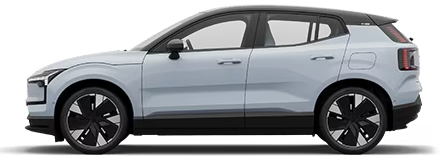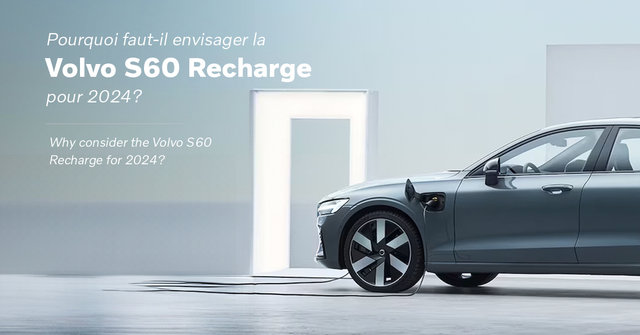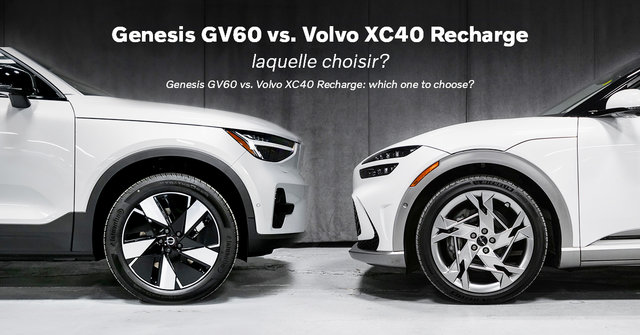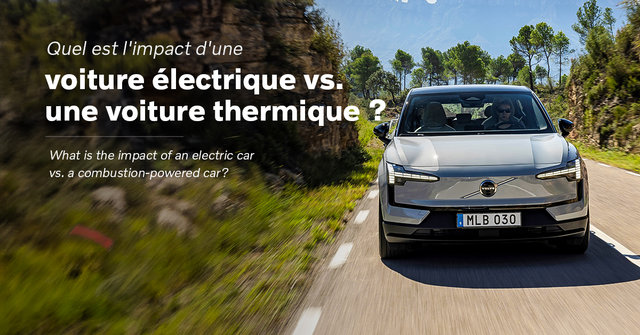Since its launch in the summer of 2000, the Volvo S60 has evolved through 3 consecutive generations. The first, marketed until 2009, focused on safety. From 2010 to 2018, the 2nd generation, introducing a more modern design and advances in safety (City Safety system). Then, the third generation has been marketed since 2019, based on the SPA platform, offering new comfort and safety...
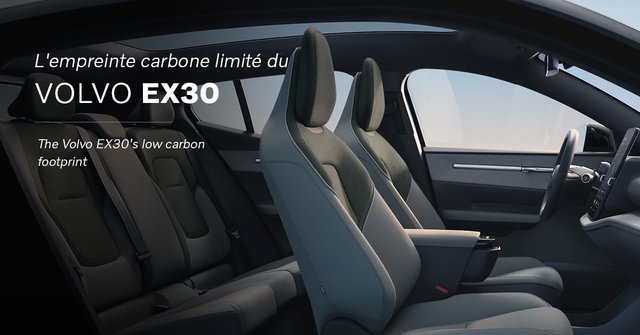
Volvo's goal is no secret - the brand wants to reduce its carbon emissions to carbon neutrality by 2040. But it knows that achieving this goal requires more than just producing electric vehicles.
We need to go further, stronger.
So, with the launch of the Volvo EX30, the brand wants to show that it is possible to produce electric vehicles with a low carbon footprint (in terms of production), and to do so for as many people as possible.
In this article, we explain the manufacturing process of the Volvo EX30.

Manufacturing the Volvo EX30: eco-responsible design & development
For a Volvo to be carbon-neutral, it's not just a matter of making it run electrically. It's about the entire manufacturing cycle, from development and construction to transportation.
As a result, the Volvo EX30 will be built in a factory powered 100% by renewable energy sources. Just like the materials produced in the factories of external suppliers.
Also, the designers of the Volvo EX30 thought about combining several of the vehicle's functions into a single component to reduce the number of parts manufactured.
"By 2025, we aim to reduce our global CO2 emissions per car by 40% compared to 2018 levels, through a 50% reduction in global exhaust emissions and a 25% reduction in emissions from our operations, raw material sourcing and supply chain; all to achieve our goal of being a climate-neutral company by 2040." - Anders Kärrberg, Global Head of Sustainability.

Finally, Volvo uses blockchain technology for the traceability of raw materials, such as those that make up the battery (lithium, manganese, cobalt, graphite and nickel).
The result is a Volvo EX30 with an estimated upstream CO2 impact of around 18 tonnes*.
*The CO2 impact is calculated from the extraction of raw materials to the arrival of the Volvo EX30 at the dealership.
Production of the Volvo EX30: using recycled materials
The Volvo EX30 is the 1st vehicle from the Swedish brand to introduce a significant number of recycled materials. For example:
- Around a quarter of the aluminum and 17% of the steel used in the Volvo EX30 are recycled
- Around 17% of the plastics used in the Volvo EX30 are recycled, from interior components to exterior bumpers,
- The interior uses a range of recycled and renewable materials for the benches, dashboard and doors, such as denim, linen and a wool blend containing around 70% recycled polyester.

Making the Volvo EX30: What about it’s end-of-life?
A legitimate question is increasingly being asked about electric Volvos: what happens to them at the end of their life?
With the Volvo EX30, the Swedish brand aims to integrate a recovery process of up to 95%. As a result, a number of the vehicle's parts will be used in the manufacture of the brand's future vehicles.

A few final words
With the Volvo EX30, the Swedish brand is tackling CO2 emissions. As a result, this compact SUV will emit only around 30 tonnes, from the production line to 200,000km of use. This figure represents a 25% reduction compared with the C40 Recharge and XC40 Recharge models, both of which are 100% electric.
Want to find out more about the new Volvo EX30?
The first deliveries are scheduled for Q1 or Q2 2024.
Other Articles That May Interest You
Currently, among all the electric SUVs on the Canadian market, one model in particular catches our eye - the Genesis GV60. The Korean manufacturer's latest model, the GV60, aims to offer a luxurious, compact alternative to the electric city SUV market. But is it really worth buyers' attention, especially when compared to the Volvo XC40? In this article, we offer a quick comparison. The duel of...
With government regulations increasingly favoring the use of electric vehicles, some critics are targeting the energetic push for such production on a global scale. From the extraction of raw materials, to production and battery recycling, the environmental impact is significant. But is it any more so than a combustion-powered vehicle? In this article, we share with you (with data to back it...



